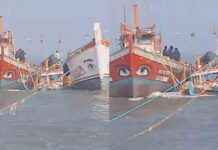Marine Drive, a historic waterfront in Mumbai reclaimed from the sea in the early 20th century, has witnessed several transformations over the years. Originally part of a vision to reimagine the city, the precinct has evolved into a vibrant hub for residents and visitors alike. Despite facing controversies and challenges during its development, Marine Drive has become one of Mumbai’s most iconic landmarks, attracting throngs of people from all walks of life.
The Backbay Reclamation scheme, which led to the creation of Marine Drive, was marred by delays, scandals, and allegations of corruption. The final execution of the project differed significantly from the original plan proposed by town planner WR Davidge. However, despite criticisms, Marine Drive has captivated the hearts of many, as noted by architect Claude Batley, who highlighted the value of the sea air and the sense of community it fosters among its residents.
In recent years, Marine Drive has seen various interventions that have sparked debates about its future. The proposal to beautify Art Deco buildings along the waterfront with a uniform color met with resistance from residents who had already invested in painting their own properties. Additionally, plans to demolish the Taraporewala Aquarium and the Savitribai Phule Women’s Hostel have raised concerns about preserving the area’s heritage and history.
The introduction of the Mumbai Coastal Road project and other infrastructural developments have further altered the landscape of Marine Drive. While these projects aim to enhance connectivity and mobility in the city, they also pose challenges to the precinct’s unique character and identity. The installation of transparent canopies and the potential construction of a statue of Shivaji Maharaj in the Arabian Sea have sparked discussions about maintaining the area’s historical integrity while accommodating modern needs.
As Marine Drive continues to evolve, residents and experts alike weigh in on its significance and future. Architect Rahul Mehrotra emphasizes that the promenade belongs not just to the precinct but to the entire city, serving as a vital public space for all to enjoy. The linear dimension of Marine Drive, as noted by urbanist Neera Adarkar, provides a sense of neutrality and openness that allows for diverse uses and experiences.
The accessibility and safety of Marine Drive have made it a cherished space for many, offering a retreat from the hustle and bustle of city life. Residents like Shobha Nayar and Jenai Wadia appreciate the promenade’s inclusivity and ease of access, highlighting its importance as a public resource. The ever-changing nature of Marine Drive, from morning strolls to afternoon rendezvous, reflects the dynamic spirit of Mumbai and its people.
In the midst of rapid urban development, Marine Drive stands as a testament to the city’s history and resilience. As Mumbai undergoes transformative changes, it is essential to preserve the essence of places like Marine Drive that hold cultural and social significance. The people’s right to the city, as articulated by Henri Lefebvre, underscores the importance of inclusive urban planning that prioritizes the needs and voices of residents.
Looking ahead, the reimagination of Marine Drive must strike a balance between progress and preservation, honoring its past while embracing the future. As a beacon of Mumbai’s heritage and community spirit, Marine Drive continues to inspire and unite those who call the city home.




















